| The New ST-2000XM Dual sensor Self-guiding Antiblooming 2 Megapixel CCD Camera From _________ SBIG |
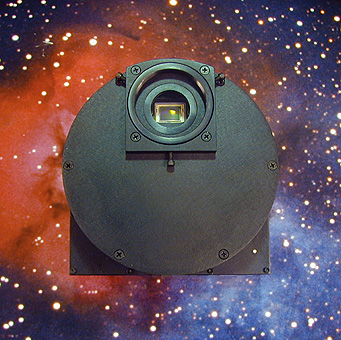 |
ST-2000XM
| The New ST-2000XM Dual sensor Self-guiding Antiblooming 2 Megapixel CCD Camera From _________ SBIG |
 |
![]() 2003 improvements include a higher QE KAI-2001M imging CCD from Kodak
(1/1/03) and larger TC-237H guiding CCD from Texas Instruments (8/18/03)
2003 improvements include a higher QE KAI-2001M imging CCD from Kodak
(1/1/03) and larger TC-237H guiding CCD from Texas Instruments (8/18/03)
Our customers have been invaluable sources of inspiration and direction. It was in direct response to customer inquiries that we developed the ST-2000XM. Now those casual imagers who wanted something bigger and better but not at such a high price as the ST-8 or ST-10 have got what they asked for. The ST-2000XM has been developed to meet the needs of the astro imager looking for:
A first for SBIG, the new model ST-2000XM (X=high speed USB, M=microlens) uses an high quality interline CCD from Kodak. The KAI-2001M CCD is a 2 megapixel progressive scan detector with an active image area of 1.92 million pixels. The active image area is 1600 x 1200 pixels at 7.4 microns. This array is 75% larger than the Sony CCD used in competitors' "megapixel" cameras and ST-2000XM is a self-guiding camera, utilizing SBIG's patented dual sensor design. The imaging CCD is nearly the same size as the KAF-1602E used in the ST-8XE but due to the smaller pixel size it contains nearly half a million more pixels than the ST-8XE. Full frame download time is approximately 4.5 seconds with our new high speed USB electronics. This camera is also fully compatible with all of our existing accessories such as CFW8 filter wheel and AO-7 adaptive optics device. The ST-2000XM has antiblooming protection and the quantum efficiency is comparable to the ABG versions of the new enhanced full frame "E" detectors used in the ST-7XE cameras with a shift in the peak sensitivity toward the blue. Compared to the ABG versions of the full frame "E" series cameras, the ST-2000XM is more sensitive in the blue and green, and slightly less sensitive in the red. Moreover, because the ST-2000XM has two CCDs (a guiding CCD as well as an imaging CCD) in the same camera head, it is capable of self-guiding without any compromise in the quantum efficiency of the imaging CCD. Other manufacturers use a scheme to split the lines of an interline CCD for self-guiding but this technique can only be used with specific types of detectors and if it is used the result is a loss of 50% of the camera's sensitivity. The Sony "megapixel" CCD is incompatible with this method. Neither of these problems plague the ST-2000XM. In other words, not only CAN the ST-2000XM self-guide, it can do so without having to double the exposure time to compensate for the guiding feature.
 |
The ST-2000XM is equipped with our new cooling design including a heat exchanger ready for water circulation as standard equipment. For the vast majority of applications the water circulation feature will not be needed. This design will typically cool to -35o below ambient (-30o minimum) without water or typically down to -45o C from ambient (-40o minimum) with water circulation. Cooling is also regulated to 0.1 degrees. The ST-2000XM has an electronic shutter and, unlike competing models, a mechanical shutter as well. It can therefore not only take very short exposures for high resolution planetary imaging, it can also automatically take and subtract dark frames without having to cover the telescope or remove the camera.
| 2 megapixels 7.4 microns High speed USB 4.5 second downloads Self-guiding CCD $3495.00 |
||
| Compare these
features with Competitors' Sony 1.3 Megapixel Camera |
ST-2000XM | Sony Megapixel Camera |
| Pixel Array | 1600 x 1200 | 1300 x 1030 |
| Pixel Size | 7.4 microns | 6.7 microns |
| Total Active Pixels | 1.92 million | 1.33 million |
| CCD Dimensions | 11.8 mm x 8.9 mm | 8.7 mm x 6.9 mm |
| Active Area | 105 sq. mm | 60 sq. mm |
| Blue Response | 50% QE at 410 nm | 23% QE at 410 nm |
| Full Well Capacity | 45,000 e- | 30,000 e- |
| Anti-blooming Protection | Yes | Yes |
| Download rate | ~425,000 pixels / sec | ~125,000 pixels / sec |
| Full Frame Download Time | 1.9 million pixels in 4.5 sec. | 1.3 million pixels in 10 - 12 sec. |
| Mechanical shutter for auto dark frames | Yes | No |
| Ability to Self-Guide | Yes with built-in second CCD | No |
| Cooling | -35 C with air, -45 C with water | -30 C air only |
| User selectable cooling temperature | Yes, software selectable | Not available |
| Optional Integrated Color Filter Wheel | Yes, matching CFW8A with custom filters | No |
| Premimum Software Included With Camera | CCDSoftV5, TheSky, CCODPS, CCDSharp | Manufacturer's software |
 |
The size of the CCD determines the field of view through a given optical system |
The pixel size should be
matched to your optical system for best performance. |
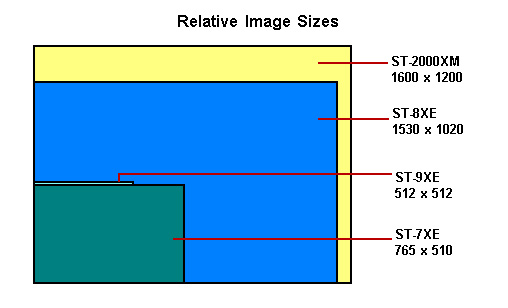 |
The pixel array
determines how large the image size appears on your monitor |
Standard Accessories for the ST-2000XM:
 |
 |
 |
| CFW8A Color Filter Wheel
with custom RGB dichroic filters for color imaging |
Extra carousel available
for additional specialty filters or UBVRI sets |
Integrated CFW8A design
mates to camera housing to form single unit |
 |
 |
 |
AO-7 adaptive optics
accessory uses the |
Optional submersible
water pump and |
Relay Adapter Box uses
signals and power |
ST-2000XM First Light Images:
 |
M3.
ST-2000XM "First Light" image. |
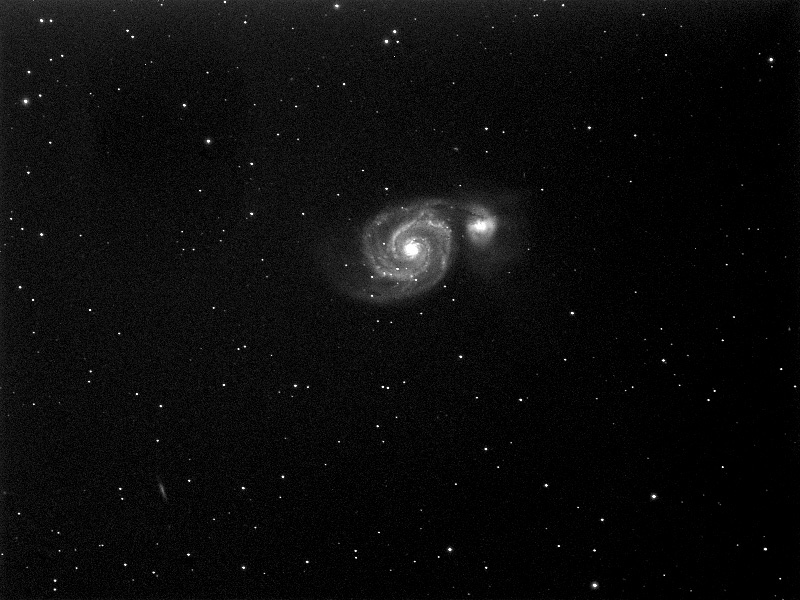 |
M51 and IC4263.
ST-2000XM "First Light" image. |
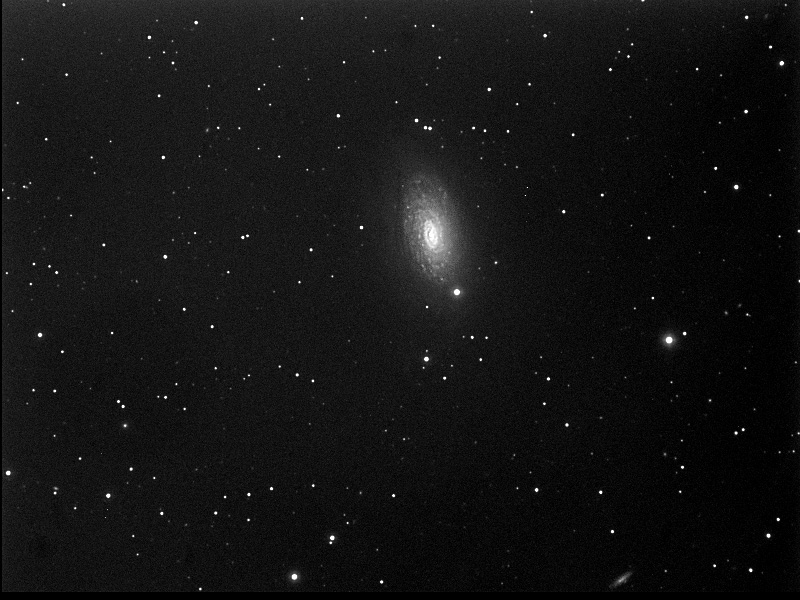 |
M63 and UGC8313 .
ST-2000XM test exposure. |
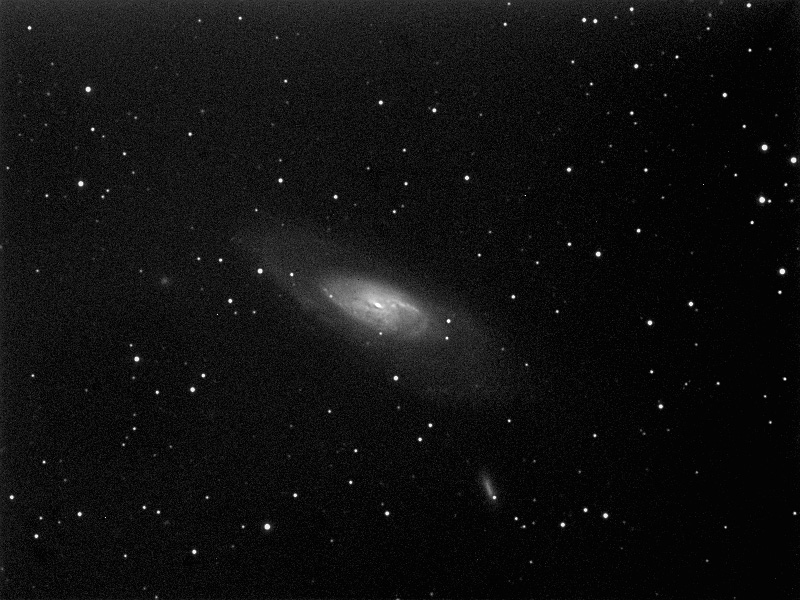 |
M106, NCG4248
and UGC7356. ST-2000XM test exposure. |
 |
M51.
ST-2000XM. |
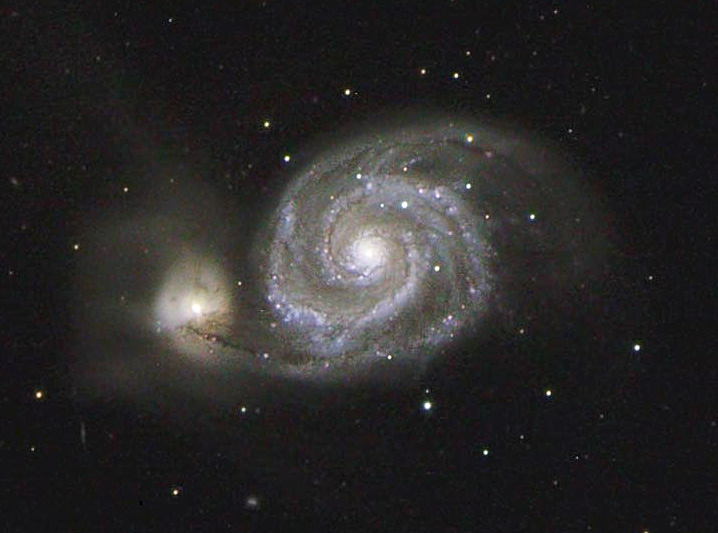 |
M51. Same as above. Cropped central portion at full resolution. |
The ST-2000XM is a complete camera system. There is no need to add in the additional cost of an interface or an autoguider or a nosepiece or better software to make these cameras actually operate as they should. Everything that is needed to make the camera operational is included in the base price. We even include some non-essential, but desirable, items such as a custom hard carrying case and extra nosepiece.
Each ST-2000XM camera system INCLUDES at no additional cost:
Typical Specifications:
Model ST-2000XM CCD Specifications
| CCD | Kodak KAI-2001M + TI TC-237H |
|---|---|
| Pixel Array | 1600 x 1200 pixels, 11.8 x 8.9 mm |
| Total Pixels | 1.92 million |
| Pixel Size | 7.4 x 7.4 microns |
| Full Well Capacity (Unbinned) | ~45,000 e- |
| Full Well Capacity (Binned) | ~90,000 e- |
| Dark Current | 0.35e¯/pixel/sec at 0° C |
| Antiblooming | Standard |
Readout Specifications
| Shutter | Electromechanical |
|---|---|
| Exposure | 0.01 to 3600 seconds, 10ms resolution |
| Correlated Double Sampling | Yes |
| A/D Converter | 16 bits |
| A/D Gain | Unbinned = 0.72e-/ADU Binned = 1.4 e-/ADU |
| Read Noise | 15e- RMS |
| Binning Modes | 1 x 1, 2 x 2, 3 x 3, and 1 x N, 2 x N, 3 x N |
| Digitization Rate | ~ 425khz |
| Full Frame Acquisition | ~ 4.5 seconds |
Optical Specifications (8" f/10)
| Field of View | 20 x 15 arcminutes |
|---|---|
| Pixel Size | 0.75 x 0.75 arcseconds |
| Limiting Magnitude (est.) | Magnitude 14 in 1 second |
| (for 3 arcsec FWHM stars) | Magnitude 18 in 1 minute |
System Specifications
| Cooling - standard | Single Stage Thermoelectric, Active Fan
with Water Assist -35 C from Ambient Typical without water -45 C from Ambient Typical with water |
|---|---|
| Temperature Regulation | ±0.1°C |
| Power | 5 VDC at 1.5 amps, ±12 VDC at 0.5 amp desktop power supply included |
| Computer Interface | USB |
| Computer Compatibility | Windows 95/98/2000/Me/NT/XP |
| Guiding | Dual CCD Self-Guiding |
Physical Dimensions
| Optical Head | 5 inches diameter x 3 inches 12.5 cm diameter x 7.5 deep 2 pounds/0.9 Kg |
|---|---|
| CPU | All electronics integrated into Optical Head, No CPU |
| Mounting | T-Thread, 1.25" and 2" nosepieces included |
| Backfocus | 0.92 inches |
Price and specifications are subject to change without notice
Revised: August 18, 2003 12:08:11 PM.
Copyright © 2002 Santa Barbara Instrument Group, Inc. All rights reserved.
Please report any problems with this page directly to the Webmaster